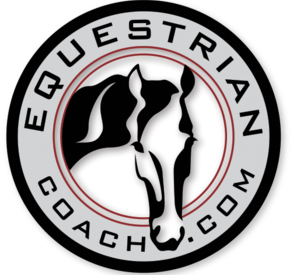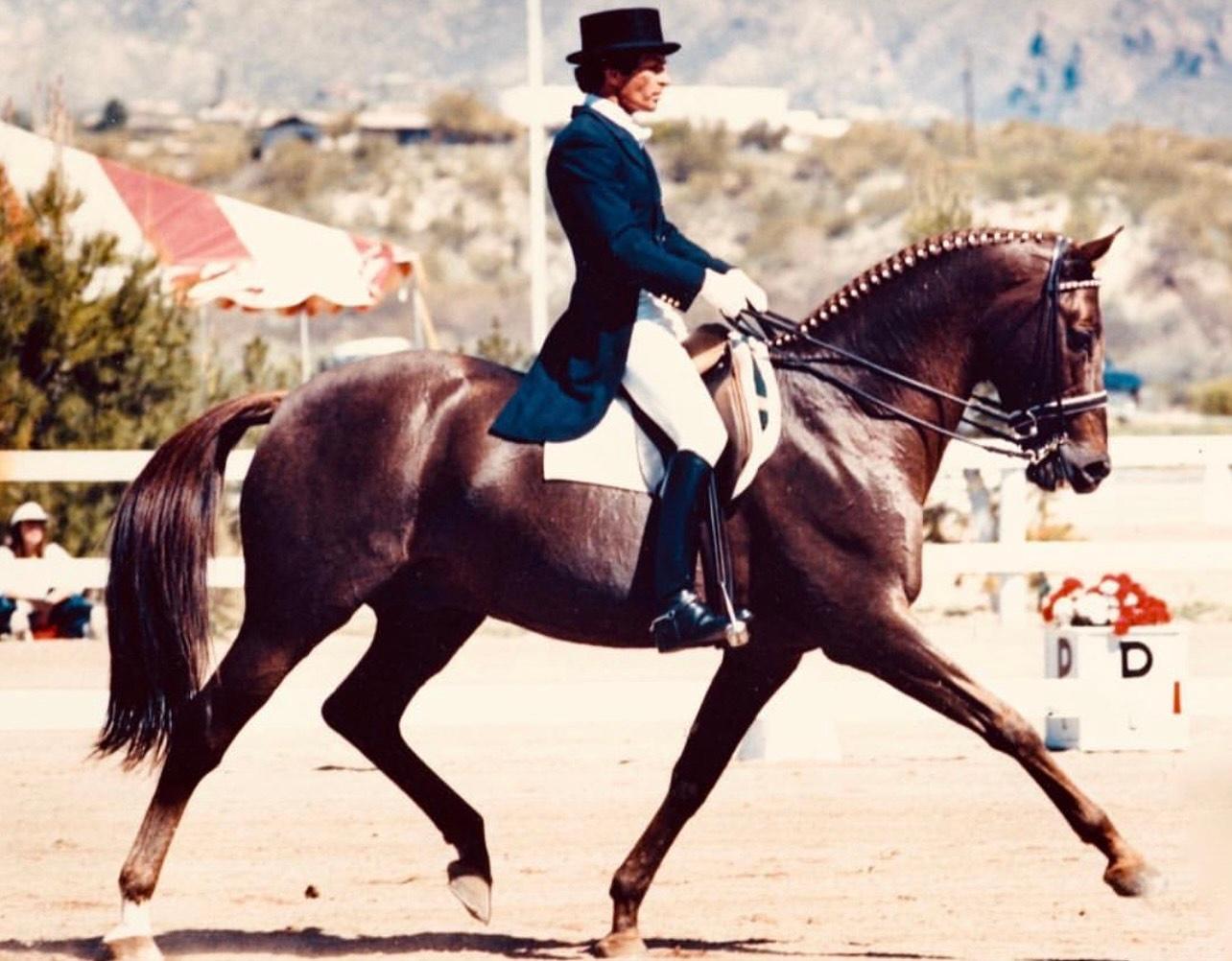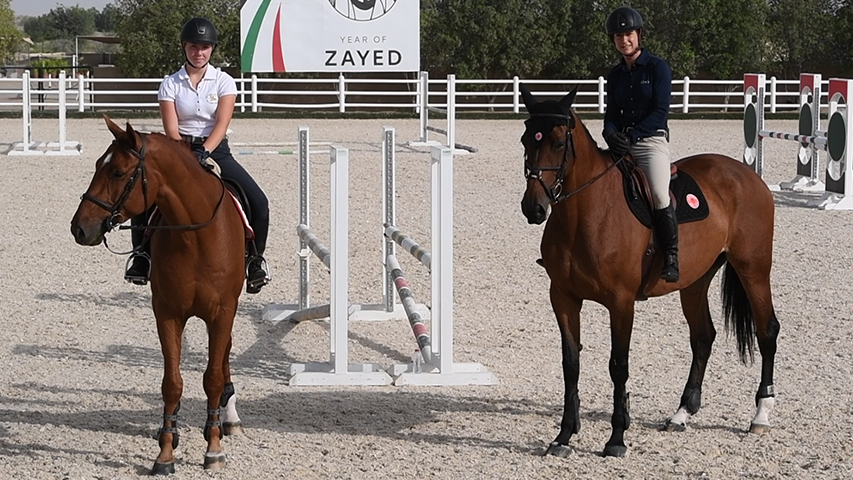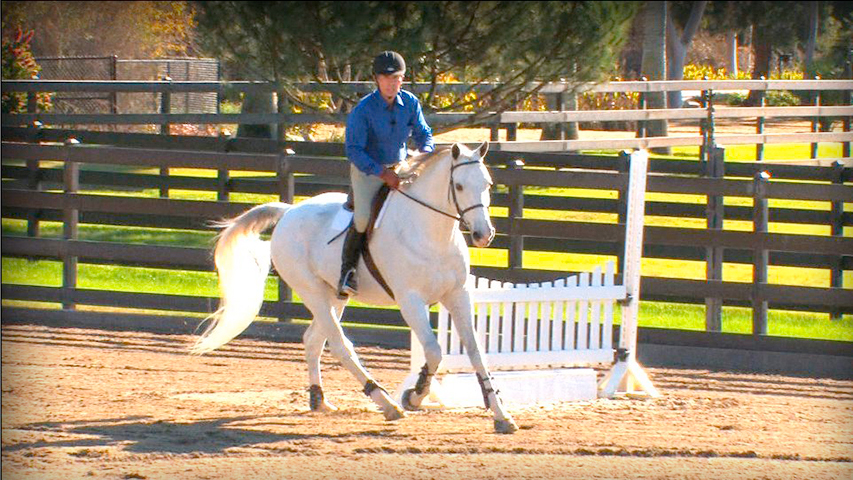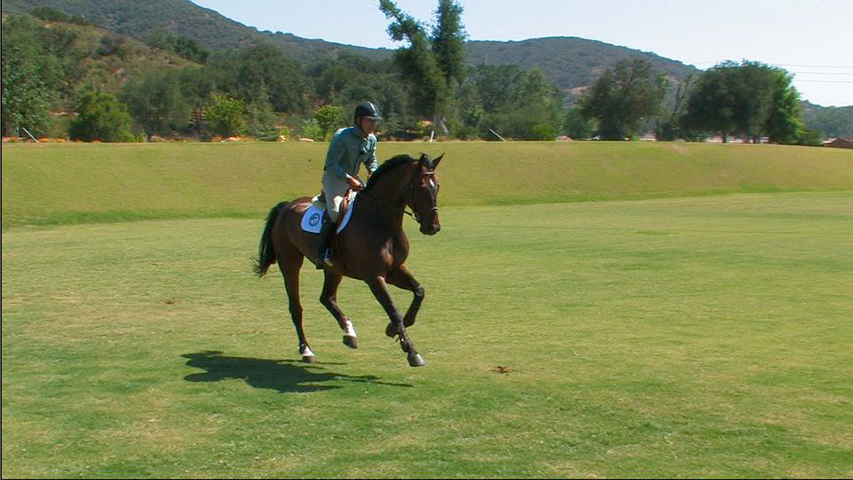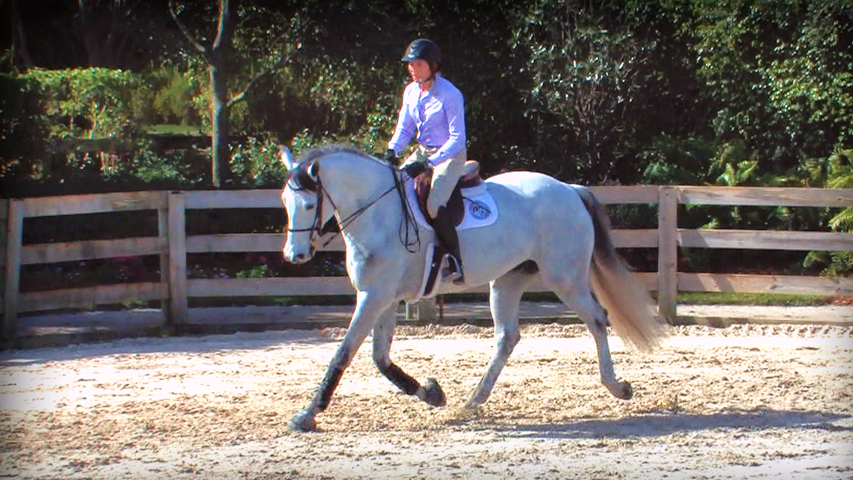Bernie
- 03 Apr, 2023
- 0 Comments
- 5 Mins Read
Flatwork for Hunters and Jumpers and the Dressage Pyramid of Training
I find that in our Hunter and Jumper disciplines we are striving for many of the same ingredients and goals in training our horses as in the Dressage discipline. The Dressage training pyramid states in this order: Rhythm, Suppleness, Contact, Impulsion, Straightness, and finally, Collection.
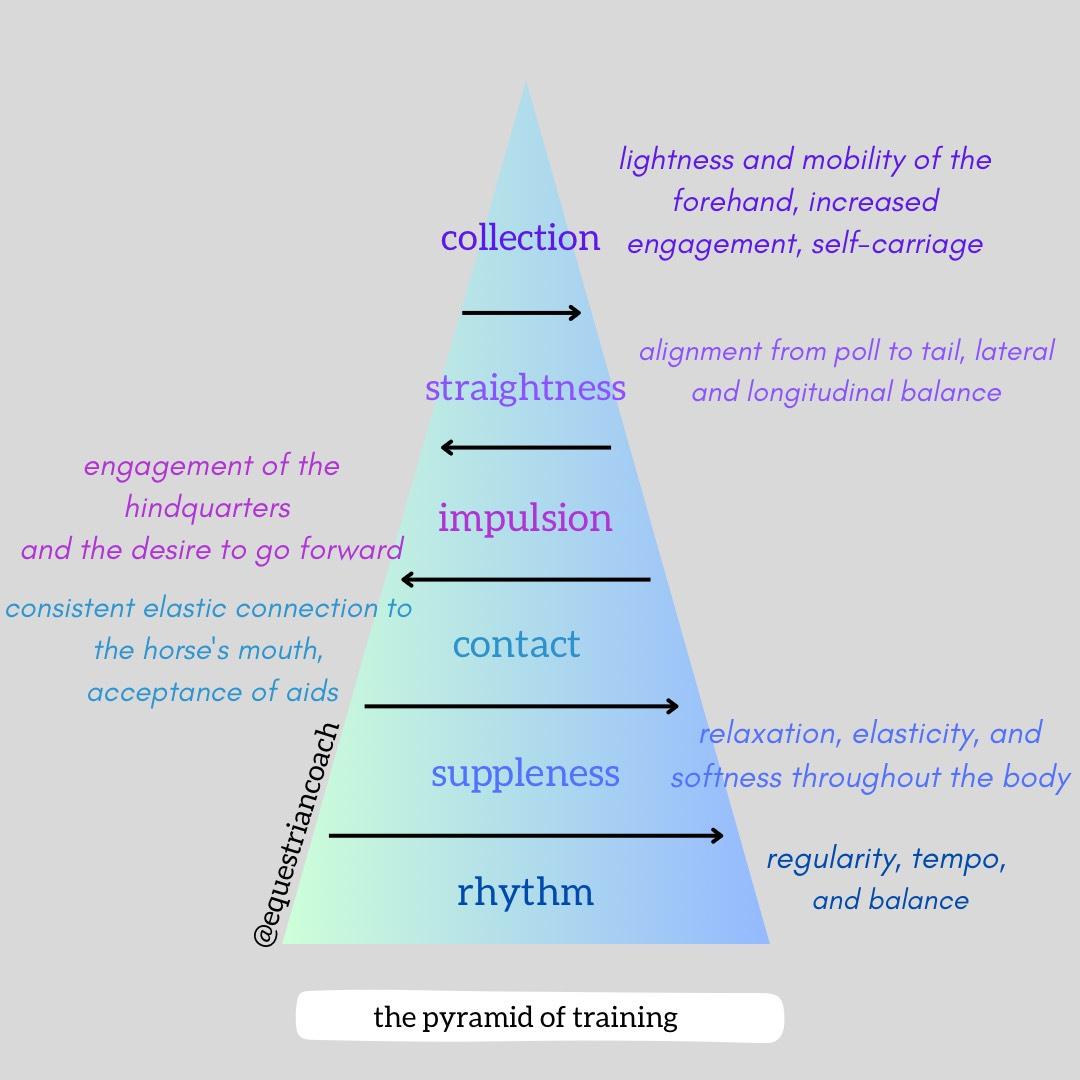
The first four are, of course, staples of my training with jumping horses—although the order may be mixed. Yes, I like straightness, but does my horse have to be as straight to jump a course as a horse being judged in a dressage arena? I need a connected horse, leg to hand, but do I need a collected horse to jump a hunter round? How much and when does my jumper need collected gaits to do his job rather than just being connected. Our jumpers are galloping and jumping in a forward balance in large arenas compared to the dressage horse performing semi or collected gaits in central balance in a small arena. I find that adding a bit of collection at times with an advanced jumper in the canter gait beneficial to his/her training.
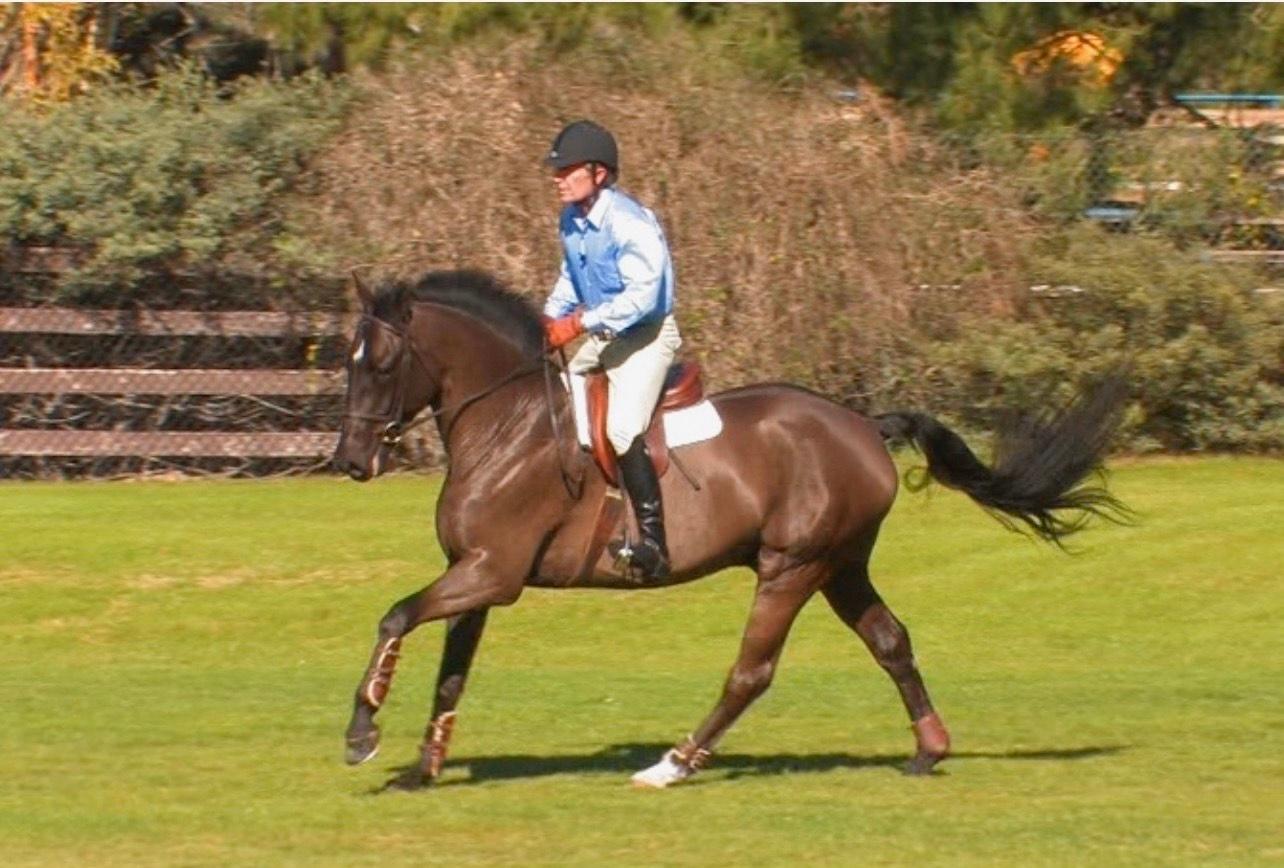
I once heard a famous rider, Meredith Michaels Beerbaum, say to a group she was teaching, “I can jump any course in the world if my horse does four things well: Instantly forward from my leg, instantly back from my hand, turns left, and turns right.”
What she means is that in our jumping disciplines we have to concentrate on the basics. Getting our horses in front of our leg to respond to the lightest of leg aids. Having them come back and shorten their stride so well that our aids are nearly invisible. That solves the issues of stride control in the lines. Turning right and left pertains to track control. Indoor arenas often ask horses to be able to shape out deep into the corners. A jump-off or the handy round of a hunter derby asks the horse to be able to follow the rider’s aids instantly and manage tight turns. Bending lines in equitation championships often ask many questions in not only stride length but in the track you choose. The goal of our training is to produce a horse that lightly and instantly reacts to our aids in order to successfully ride the demands of a course.
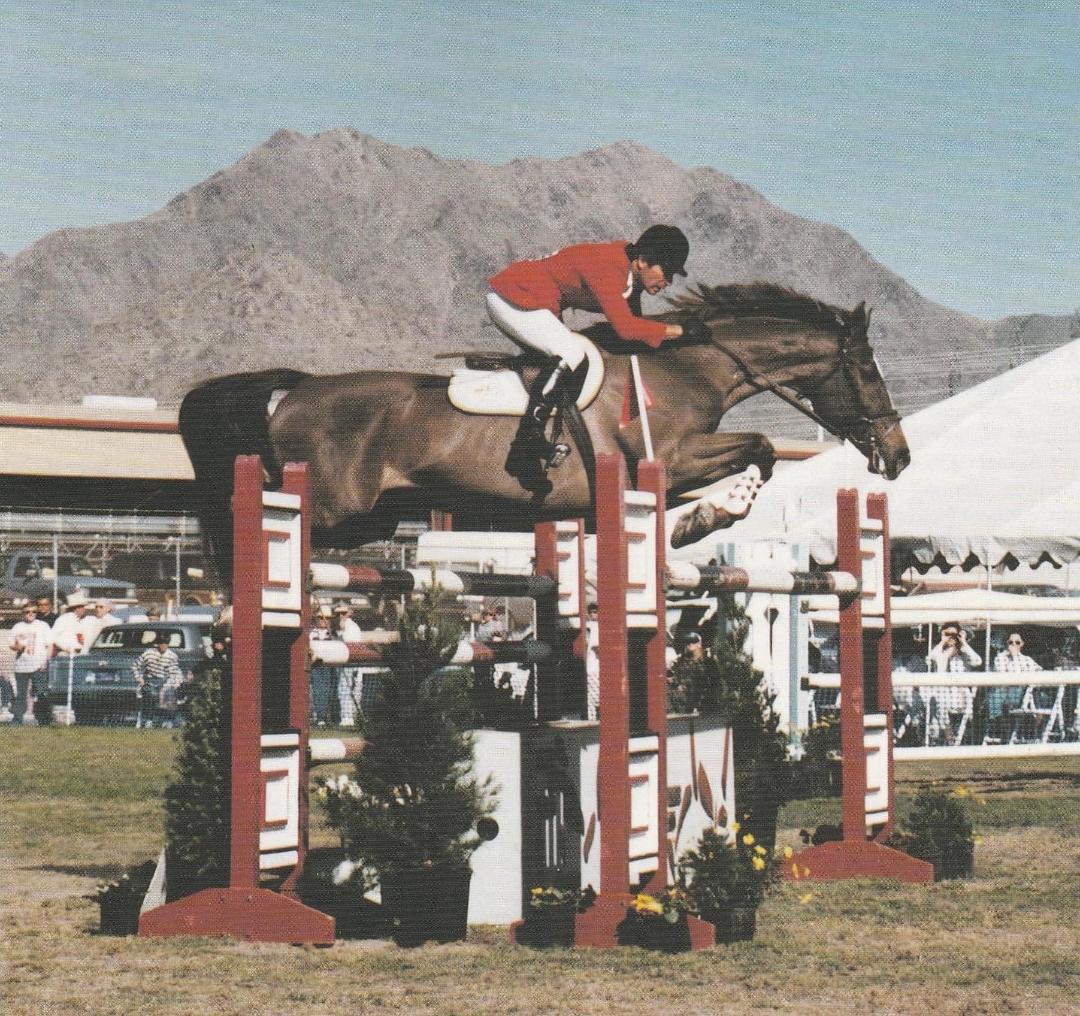
We can obtain most of Meredith’s four staples through transitions and lateral exercises. However, how we obtain them with our aids is quite different from how the dressage horse is trained. The dressage horse is trained through a sophisticated coordination of driving and restraining aids. As Christilot Boylen, a Canadian Olympian, once said, “Collection is impulsion redirected upward.” A rider’s balance is mainly in their seat.
This system is complicated and takes years to achieve. The jumping horse is in a forward balance with riders balanced in their stirrups. It’s a simple system of training based on non-clashing aids. Therefore, horses can be trained for their job in a much shorter time as can the riders.
I encourage top riders to be educated in some of the dressage methods, but take great care with their students that they don’t mix and match their training aids from one system to the other and confuse the horse.
Video Recommendations:
Fundamentals of Flatwork – Part 1 – Basic
Bernie Traurig
The first of the series, this video outlines a simple, progressive method of flatwork for all jumping disciplines. It focuses on the training of a young or inexperienced horse with the aim to achieve obedience to light rein and leg aids, and assumes the rider is familiar with the proper techniques of riding and jumping. But you do not have to be a highly experienced or seasoned rider because Bernie’s strategies are clear, straight-forward, classic and timeless. The Basic level highlights his favorite exercises that can be incorporated into anyone’s training program.
Running Time: 46 minutes and 25 seconds
Fundamentals of Flatwork – Part 2 – Intermediate
Bernie Traurig
If you have the Basic level down, you and your horse are ready for more of Bernie’s proven supplemental training techniques. In the Intermediate level, you’ll learn how to put the polish on your performance by blending these potent methods into your everyday training program. You will learn how to build on the fluency with which you and your horse have come to communicate. For most horses, mastering this level will be sufficient to perform well in any show ring.
Running Time: 59 minutes and 6 seconds
Fundamentals of Flatwork – Part 3 – Advanced
Bernie Traurig
The Advanced level further illustrates Bernie’s modern, refined and simplified approach. If your goal is a higher level of performance or to achieve a greater brilliance and quality of gait, this video is for you.
Running Time: 51 minutes and 16 seconds
Cynthia Hankins’ Favorite Flat Exercises
Cynthia Hankins
Cynthia Hankins, top trainer, clinician and ”R” judge, gives us her personal favorite flat exercises designed to maximize the horse’s rideability and responsiveness while demonstrating the proper execution and form of the American Hunter/Jumper Forward Riding System.
Running Time: 16 minutes and 51 seconds
Daily Flatting Tips
Alice Debany Clero
Dubai Show Jumping coach, Alice Debany Clero, is with us again applying her classic, methodical approach to daily flatwork. If you find your flatwork to be uninspired, watch the exercises Alice uses every day as a blueprint for your own program. With Alice’s system, the rider’s basics are rehearsed every single day and their “jumping muscles” are reinforced without causing any concussion to the horse. Additionally, the horse is daily encouraged to have fun being adjustable and rideable with consistent rewards.
Running Time: 22 minutes and 19 seconds
Have Something You Want to Ask Our Panel of Experts?
Ask The Experts is the ultimate way to get help from the top professionals in the equestrian industry without leaving the comfort of your home. This service is available to Monthly, Annual, and Lifetime Members of EquestrianCoach.com.
